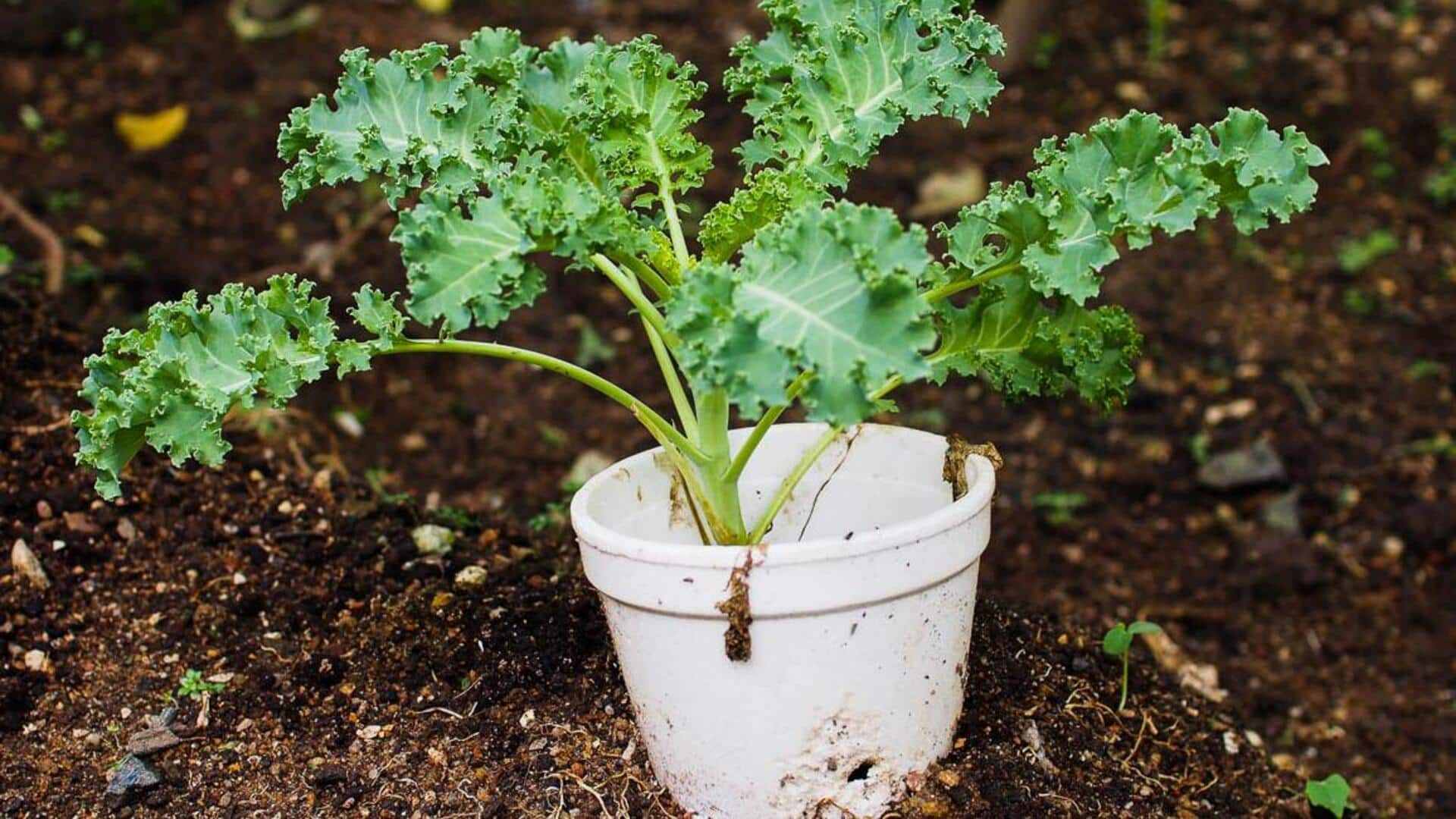
Growing kale in winter: 5 tips you need to know
What's the story
Kale is a nutrient-packed leafy green that loves the cool weather. It's a gardener's best friend for its resilience and simplicity. Even if you're a pro at gardening or just starting, knowing the secrets of kale will make your harvest plentiful. This article shares five crucial tips for growing kale in the cold, so your garden stays full of life.
Variety
Selecting the right variety
There are many types of kale, each with its own unique traits and flavors. For colder climates, you should pick varieties that are specifically bred for cold tolerance. Dwarf Blue Curled and Winterbor are great options that can handle the cold and even taste better after a frost. Choosing the right variety is key to making sure your kale garden is ready to thrive in your unique climate conditions.
Planting time
Timing your planting
Kale thrives in cool weather, so the best times to plant it are early spring or late summer. For a spring harvest, sow seeds four to six weeks before the last expected spring frost. For a fall harvest, sow seeds six to eight weeks before the first expected fall frost. This timing ensures your kale plants establish themselves during the most favorable growing conditions.
Soil prep
Soil preparation and fertilization
Kale prefers well-drained soil that's high in organic matter, with a pH between six and seven. Amend your soil with compost or well-rotted manure prior to planting to supply the nutrients needed for growth. Applying a balanced fertilizer at the time of planting can further support healthy development. Regularly testing your soil's pH is crucial to maintain it within the optimal range for kale cultivation.
Watering
Watering techniques
The secret to growing lush, tender kale leaves is maintaining consistent moisture. However, avoid overwatering as this can lead to root rot and other diseases. Strive for about one inch of water per week, either through rainfall or additional watering during dry periods. Applying mulch around your plants aids in moisture retention and also suppresses weeds that compete for resources.
Pest control
Protecting plants from pests
Kale is prone to pests like aphids and cabbage loopers; if left unchecked, these pests can cause significant crop damage. Regularly check for signs of infestation and use organic pest control methods to manage pests without harming beneficial garden organisms. Introduce beneficial insects like ladybugs or apply neem oil sprays to affected areas. This approach ensures pests are kept at bay without harming the kale or the garden's beneficial organisms.